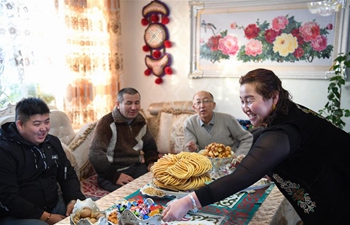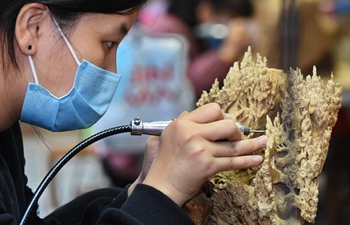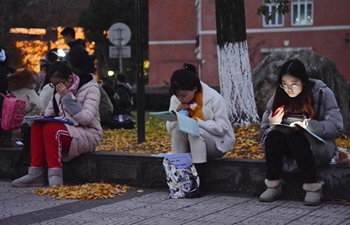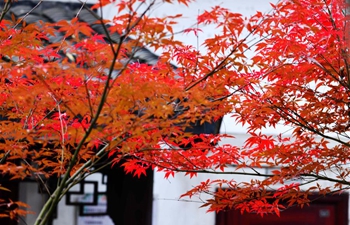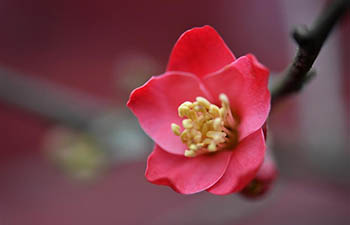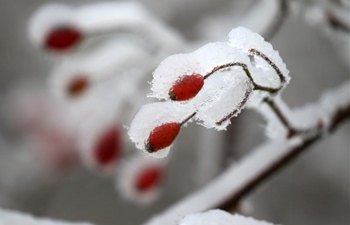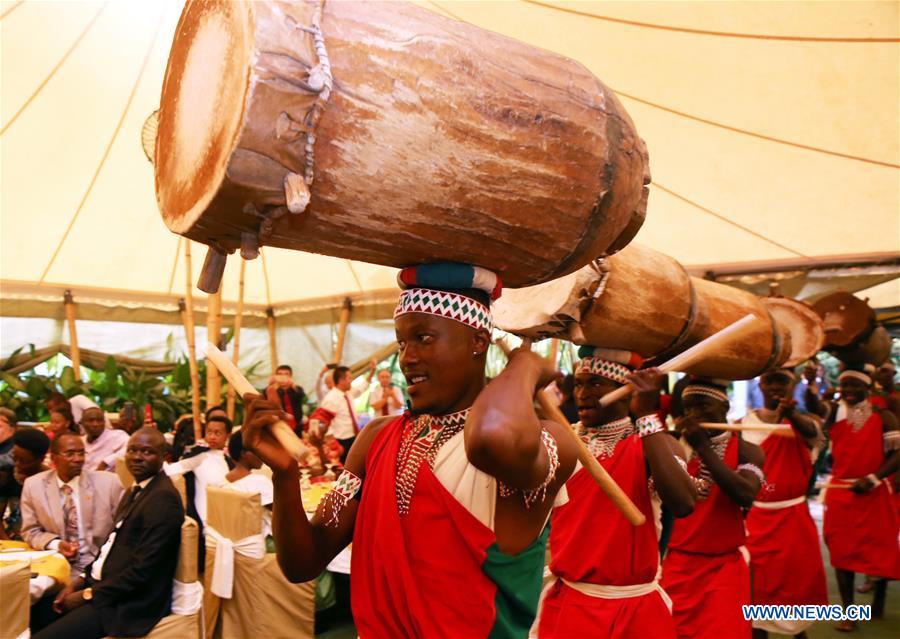
Burundian drummers perform in Bujumbura, capital city of Burundi, on Dec. 22, 2018. The drum performance, a kind of ritual dance, was inscribed on the Representative List of the Intangible Cultural Heritage of Humanity of the UN's heritage agency UNESCO in 2014. (Xinhua/Lyu Tianran)
by Xinhua writer Lyu Tianran and Apollinaire Niyirora
BUJUMBURA, Dec. 22 (Xinhua) -- When some 30 Burundian drummers practiced Burundi's traditional drum show in Gishora drum sanctuary in central Burundi, resounding beating drums and singing was heard from far.
Surrounded by green mountains, the drummers, dressed in clothes with the colors of green, red and white that make up Burundi's national flag, were beating drums that are made from certain types of trees and covered with cow skin.
The drum performance, a kind of ritual dance, was inscribed on the Representative List of the Intangible Cultural Heritage of Humanity of the UN's heritage agency UNESCO in 2014.
The drum sanctuary in Gitega province, about 100 kilometers east of capital Bujumbura, was established in 1903 to mark the braveness of local residents who provided refuge for the then Burundian king.
Fenced with trees and branches in a traditional way, the touristic site is constituted of small circular houses covered with straws from the top to the bottom, and a courtyard where the drum performance stages.
The Burundian drum, originally symbolizing power and fecundity and originated in the province of Gitega, particularly in the districts of Giheta, Gitega, Makebuko and Bukirasazi, said Leonard Sinzinkayo, Director General of Culture and Arts at the Burundian Ministry of Culture and Sports.
It is an original artwork of the Burundian people, which is a far cry from drums in other countries in terms of materials and playing methods, Sinzinkayo told Xinhua.
"There are norms in drum beating and that style only exists in Burundi," he said. "When Burundian drummers arrive at an exhibition place, they form a semi-circle with drums on their heads. There is a central drum beaten by all drummers one after one. And on both sides of the central drum there are drummers performing in a harmonious rhythm..." he explained.
From Gitega, the drum was spread to the rest of the country after its introduction in schools through cultural, social and even religious events, said the official.
The drum performance has been popular on important occasions in the central African country.
"It is so important as it marks the identity of Burundian people," he said, adding that it boosts social cohesion, unity, peace and national reconciliation.
Tourism operator Albatross Travel and Safaris has been organizing Chinese tourists to Burundi, watching the drum performance.
The drum performance is a typical cultural attraction, different from natural attractions like wildlife, and is highly worth visiting, said Yang He, who is in charge of the Burundi, Rwanda and Democratic Republic of the Congo region of the tourism company.
This Chinese company usually arranges the drum performance at the end of the three-country trip, which brings the trip to a climax.
"The performance is spectacular and striking, which is unimaginable unless you are watching at the scene," he said.
Currently, Gishora drum sanctuary as one of the most popular sites in Burundi, receives few tourists, according to Oscar Nshimirimana, chairman of the Gishora drummers' association and head of the sanctuary.
The site can receive two tourist groups per month, who are foreigners most of the time, he told Xinhua.
A group of Gishora drummers, who are trained from as early as five years old, are given between 100,000 Burundian francs (about 37 U.S. dollars) to 150,000 francs overall for performing at an event, he said.
Leonidas Habonimana, Director General of Tourism at Burundian Ministry of Trade, Industry and Tourism, told Xinhua the government has been exploring the tourism opportunity of the drum, since it was listed as the intangible heritage of UNESCO.
Tourism holds an important place in Burundi's economy and the country has chosen to promote cultural tourism, said Habonimana, adding that the drum is ranked first on the cultural tourism.
"It is the first opportunity that we have to explore in order to attract more and more tourists in Burundi," he said.
The government is seeking to promote the drum within the regional context of the six-member East African Community (EAC), and facilitate EAC to market Burundi as a preferential cultural tourism destination, said the official.
The government is also planning an annual international festival of the drum that brings together drummers from different countries to compete.
The ministry of culture plans to promote the drum in all forms by taking measures to sustain the drum culture through training actors, said Sinzinkayo.
The ministry also plans to set up a fund for promotion of the drum and has taken measures to plant a tree species called umuvugangoma used to manufacture the drum, he said.
The collaboration between the ministries of culture and tourism needs to be boosted in order to promote the Burundian drum, he added.
